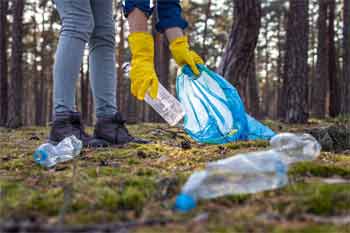In 1971, twelve activists sailed in an old fishing boat from Vancouver, Canada, to protest the U.S. nuclear test at Amchitka, an island off the coast of Alaska. Their first environmental mission was to call attention to the dangers which they list on the Greenpeace website as an earthquake zone, home of endangered sea otters, falcons, and bald eagles. They were arrested by the U.S. Coastguard and escorted back to Alaska. Since their first campaign the history of their activism efforts fall under eight broad categories see more.
From Effects of Global Warming to Genetic Engineering

- Stop causes of global warming, and switch from nuclear and fossil fuels to clean renewable energy.
- Defend oceans and ocean life from pollution, the harvesting of endangered species, damaging underwater sounds, and other threats.
- Protect the ancient forests, and the plants and animals that inhabit them.
- Support peace and disarmament.
- Stop genetic experimentation and support bio-diversity of the world’s food supply.
- Stop using toxic chemicals that threaten humans and the environment.
- Reverse the nuclear age by stopping expansion of nuclear power by shutting down nuclear plants.
- Eliminate trade practices that are detrimental to peace, individual welfare, and support sustainable trade.
Greenpeace History Author
The October 15, 2008 issue of The Utne Reader published an article by Rex Weyler, “Waves of Compassion: The founding of Greenpeace. Where are they now?” Mr. Weyler is the author of the book, Greenpeace: How a Group of Ecologists, Journalists, and Visionaries Changed the World, published by Raincoast Books in September, 2004. He is the editor-at-large for Shared Vision magazine and Dragonfly Media.
Waves of Compassion is a firsthand, personal story about the founders of Greenpeace, as Mr. Weyler sailed with Greenpeace members on their first “save the whales mission,” in 1975.

Defending Clean Energy
John Vidal, environment editor for the Guardian newspaper, London, England, wrote an article published in the Guardian on September 11, 2008, reporting that on this day six United Kingdom Greenpeace members were found not guilty, by the Crown Court jury for trying, in 2007, to shut down a coal-fired power station in Kent. He reported that they climbed up the chimney and painted the Prime Minister’s name on the side. The jury found them innocent due to trying to defend a property of more value – the damage caused by global warming.
Commenting on the decision, Mr. Vidal wrote, “When 12 normal people [the jury] say it is legitimate for a direct action group to shut down a coal-fired power station because of harm it does to our planet…where does that leave the government energy policy?”
The author anonymous on the LivingIssues.com site, on 9/11/2008, published an article titled, “Greenpeace Guilty of Criminal Disingenuousness”. The site publishes articles commenting on current events. They said concerning the Greenpeace chimney event not guilty verdict “…costly damage was caused to a chimney stack…logical consequence of this verdict is that other protesters can take the law into their own hands…represents a challenge to democracy…” Greenpeace is an international environmental organization. Members worldwide are engaging in environmental protests to encourage fair international trade, bring the “nuclear age” to a halt, eliminate the use of chemicals toxic to humans and other living things, stop all harmful genetic engineering, support for peace and disarmament, protect ancient forests, protect oceans and ocean life, and stop causes of global warming by switching to clean energy.